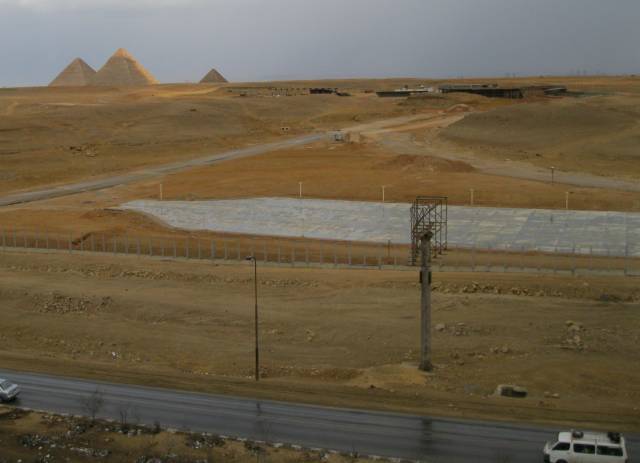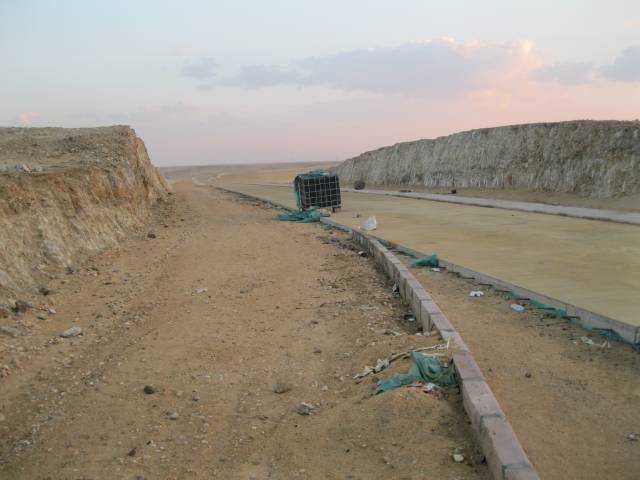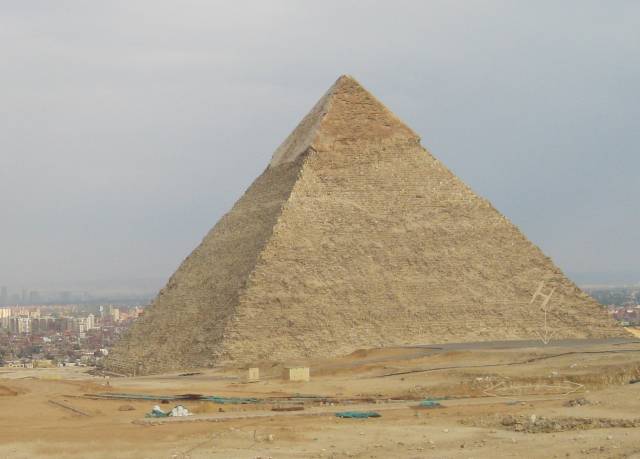|
The Giza Foundation
The Assessment
Take a look at the following two pics. They show the grass used as a staple to feed the horses donkleys and camels in Cairo.
We were told it costs the equivalent of about .... LE30 = £3 .00 = $5 .00 on average per day to feed an animal,
and the grass you see in the pic is the delivery for the dozens of local horses, donkeys and camels. In the right hand pic, a hungry horse broke away as we watched ....to then go and snatch a meal as soon as the load was delivered !
The comments from our nearest stable owner Mahmud summed up the problem. He explained :
"There are no tourists. There's no more money for us. I have more than 30 horses and I can only buy grass for 20 horses. I must make rations and look here, all my horses are starving slowly. I can do nothing. I am watching them die. Thank God for the Animal People who are helping also with medecine. So many horses and camels have become sick. Help us please to feed our animals."
.JPG-for-web-large.jpg) .JPG-for-web-large.jpg)
There is an obvious immediate problem - to meet the needs of food and medical care for all the animals we encountered.
There are existing organisations who are already helping, but the level of help, physically and especially financially is woefully inadequate to the task.
There are experienced local officials there already administering schemes. They are overwhelmed with the demand and need a massive amount of cash to be channelled in their direction to make a significant impact. Until that happens, the unprecidented death rate for camels, horses, donkeys and all other animals will continue to escalate. Cruelty will increase as malnourished sick animals are forced to work. The knock-on effect will also continue as impoverished families fight for their survival.
Clearly as a long term solution, considerable research needs to be done to coordinate the data held by so many people. The lack of regulation and registration hinders everything and leaves any aid system open to abuse. A concentrated effort must be put behind a gathering of all information held on animal ownerships, animal types, animal conditions, animal poverty, and the similar disposition for any ferral and wild animals sharing human habitats. The efforts of various animal organisations need to be better coordinated so that improvements can be sought through government liaison in a way where everyone - and the animals, benefit.
Most bad husbandry practices are institutionalised, or at least part of modern day conditioning where such importance is given to material possession - against a lifestyle of terrible poverty. Animals are used to the hilt... strictly to do as they are now intended.... ie. to produce money.. and to be whipped to be quick about it. There is little room for compassion and caring, or for the intelligent handling of animals so as to live a longer more fruitful life in service to their owners.
These things will have to be changed in the hearts and minds of the young. They will have to be forced by their peers on economic grounds, as they learn how healthy horses and camels, equal a healthy tourist business & longer animal lives. School will surely be the best lifestyle classroom; and not like the one where a big school of stable lads gallop the living daylights out of horses up and down the Sphinx road at the end of their whips........Sport for the stable boys to reward the animals for their day's efforts !!
and... Exclusive - A Plan for special 'Selection' in the Future ??
Away over on the other side of the Plateau, slightly South West of opposite the Sphinx, there is another road entrance. The proposed new main exit / entrance to the site. The dark buildings under construction in the centre of the picture are the new reception centre for the tourists, the electric train pickup station, and the new site animal stable. (The concrete strip is explained below.)


This entranceway has been in development for some time and the roadway still requires massive engineering to create a proper filter for traffic from the Desert/Fayoum road (foreground) to the Giza Plateau. It will soon be the main access to the plateau and the pyramids and has huge implications for all the animal owners on the other (current) side of the plateau.
By the way, a clue to the concrete strip is in a huge sign which heralds the desert turned green. The plan is to use the prepared section to create a little bit of Disney, and a little bit of a tropical world for those tourists who want to take a break with their children from the awfully horrible sand and heat !! The waiting construction strip is actually huge and continues for a very long way parallel to the highway.
There will be a new electric car system to take tourists to staging points for a photo call. One example is near where the helipad, located high and SW. of Kephre. The new roadway is under construction now.
The Helipad is immediately to the left of this road, which will be the tourist electric car and photocall route to the pyramids.
The road curves away west to join up at the rear of the new visitor's buildings in the pic above.

Look closely below and you will see the Helipad arrowed, plus the road shown in the pic above is arrowed below the Helipad.

Electric cars ! New visitor's reception centre ! New entrance ! ...even a new stable house !!
But what does all this have to do with an appraisal of the animal situation ?
The answer is simply this: Existing owners are very very worried. They have been told that future access to the plateau will be restricted for them under tighter and less licences. They have been told the electric cars will replace most of their function. They have been told those who gain a licence will not be allowed to walk their animals across the plateau to the new staging post and animals will have to be taken miles to get to and from work. They have been told there are still no proper facilities of shade and water being provided for the horses, camels and donkeys. They have been told the lower entrances at and just beyond the Sphinx will be closed to everyone unofficial. Their fear is that it will force a mass slaughter of animals as they and their owners become redundant !! ...These are the things being passed around the village by frightened villagers.
At the moment we do not know for sure if some or any of this speculation is true or partly true or not true at all. Nevertheless the fact of the speculation is enough to prove where more research, more fact finding, more liaison and more education is urgently needed right now.
Beyond the livestock, the treatment of dogs, cats, goats, birds and other creatures depends so much on research needed to appraise the true situation. From this a plan can be developed to properly address issues discovered. For example, it is understood that the official practice of indiscriminately using Strichnine poison is still used to kill dogs, cats, and any other unfortunate animal coming into contact with the poison. Following proper research to determine the exact nature of any problem, it is known in all civillised countries that neutering does the job as well and much more humanely.
There is a long long road to travel with your help before we will see humanity return to the animals of Egypt... but perhaps if you support us in our plans, we will take major steps in the right direction.
Look to the next section from the Index page to see our Plan of action and our appeal for help.
However first, we acknowlege there are good owners in Cairo and Egypt. We acknowlege there are healthy animals too. We acknowlege there are many who work tirelessly from every walk of life to protect and nurture Egypt's domestic and wild animal life.
Our greatest wish is for the ideal to become a reality, and more balanced scenes like these below will become normal everywhere.
......Well..almost !!! I couldn't find any fat horses feeding, to photograph.
.JPG-for-web-large.jpg) .JPG-for-web-large.jpg)
Study our Plan of Action from the main index HERE
~~~~~~~~~~~~~~~~~~~~~~~~~~~~~~~~~~~~~~~~
Our Appeal
|